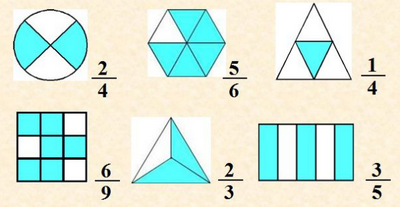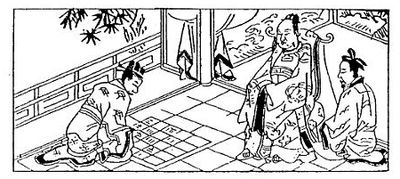By: Tao Steven Zheng (郑涛)
Chinese Fractions

In the Chinese language, fractions are expressed in words using the characters 分之 (fen zhi, literally "parts of") between the denominator (分母 fen mu) and the numerator (分子 fen zi). This encapsulates the concept of dividing a whole number into a certain number of equal parts. For example, the fraction three-quarters is written 四分之三 (si fen zhi san, literally "four parts of three"). For mixed numbers, the integer part is written first, followed by the fractional part. For example, is written 三、七分之一 (san, qi fen zhi yi, literally "three, seven parts of one"). Aside from the standard expressions for fractions, there exists special names for four specific fractions that are commonly found in ancient Chinese mathematical texts (Table 1).
Table 1. Four specific fractions
| 弱半 ruo ban (weak half) | 1/4 |
| 少半 shao ban (lesser half) | 1/3 |
| 中半 zhong ban (middle half) | 1/2 |
| 太半 tai ban (greater half) | 2/3 |
Computation with Fractions
This suggests that the mathematicians of ancient China were expected to be proficient with calculations involving fractions. In Chapter 1 of the Jiuzhang Suanshu, there are seven major arithmetic operations to master (Table 2).
Table 2. Arithmetic operations on fractions
| (1) 约分术 yue fen shu (method of reducing fractions) |
| (2) 合分术 he fen shu (method of adding fractions) |
| (3) 减分术 jian fen shu (method of subtracting fractions) |
| (4) 课分术 ke fen shu (method of comparing fractions) |
| (5) 平分术 ping fen shu (method of averaging fractions) |
| (6) 经分术 jing fen shu (method of dividing fractions) |
| (7) 乘分术 cheng fen shu (method of multiplying fractions) |
The following seven problem studies will examine the procedures and terminologies for each method in detail.
Problem Study 1: Reducing Fractions
Problem 5 and Problem 6 from Chapter 1 of the Jiuzhang Suanshu illustrates the method for obtaining the fully reduced form of a given fraction. The solution method for reducing fractions to lowest terms given in the Jiuzhang Suanshu illustrates the general method taught in elementary schools (called the Euclidean algorithm in the West). Here, the term dengshu (等数,literally "equal number") is equivalent to the greatest common divisor (GCD).
| [1.05] 今有十八分之十二。问:约之得几何?
约分术曰:可半者半之,不可半者,副置分母子之数,以少减多,更相减损,求其等也。以等数约之。 |
[1.05] Suppose there are 12/18. Question: What is the reduced form?
|
Solution for 1.05
The numerator 12 and the denominator 18 are even numbers, so halve them.
Now the numerator 6 and the denominator 18 are odd numbers, so they cannot be halved. Use the Euclidean algorithm to find the dengshu (等数, equal number).



